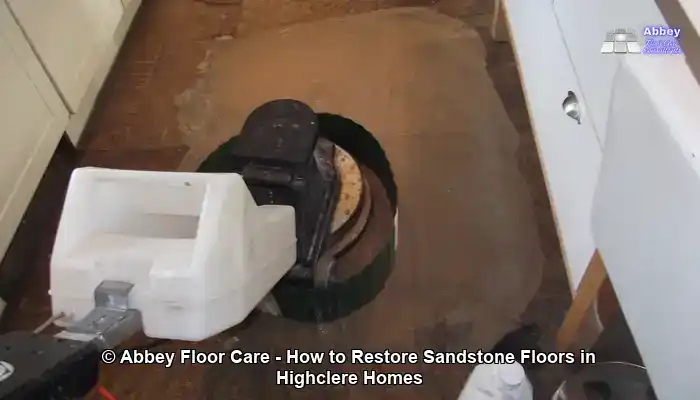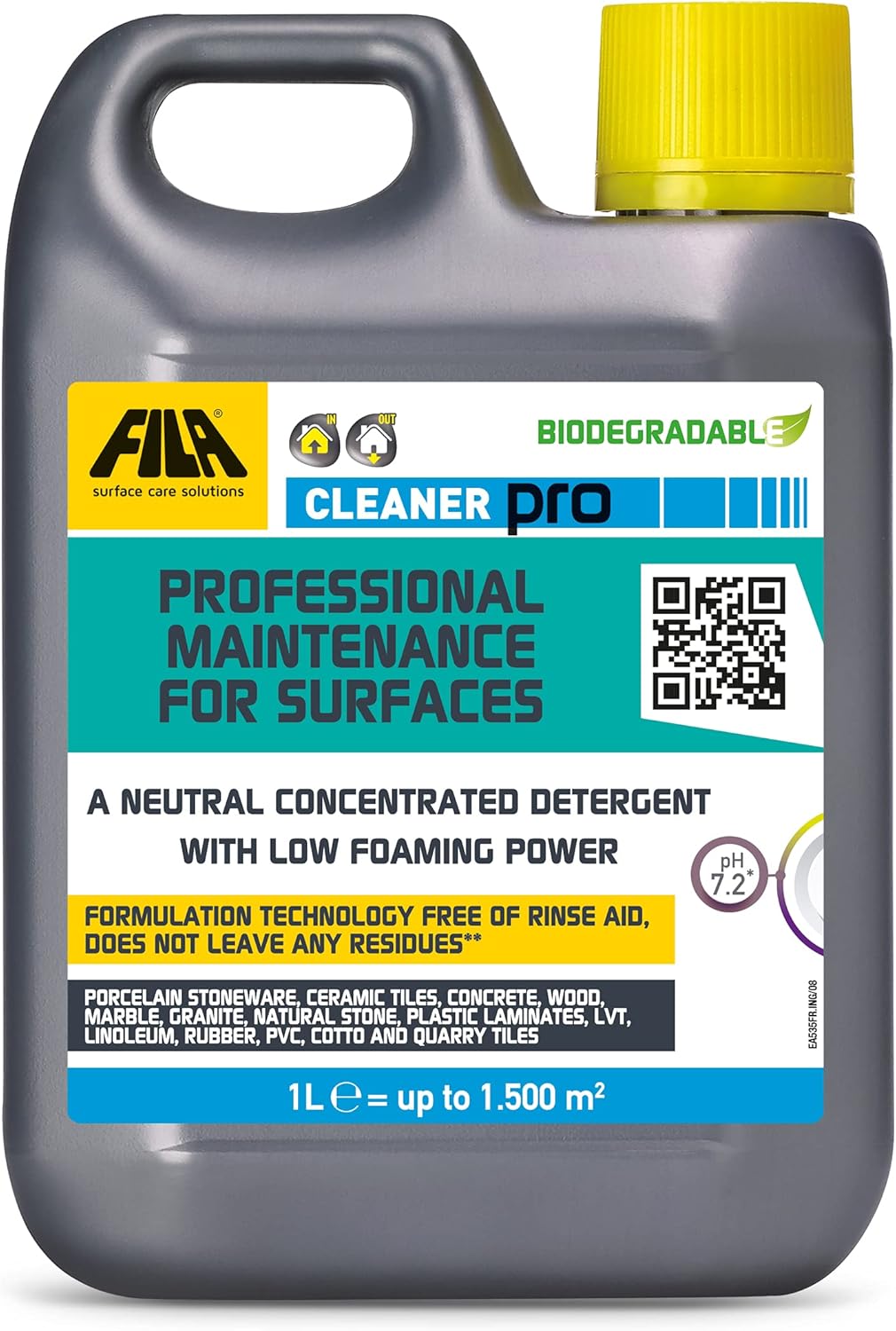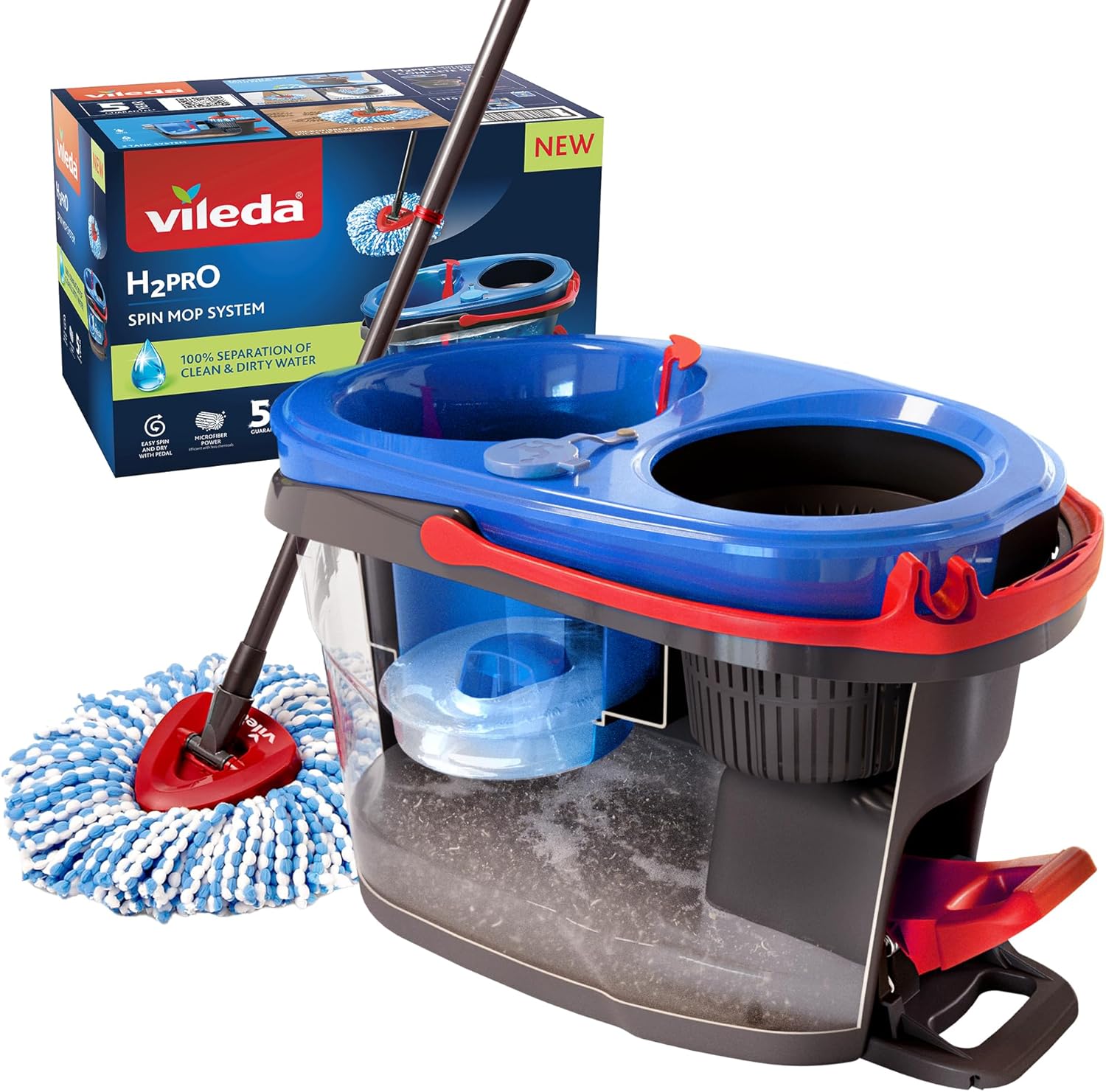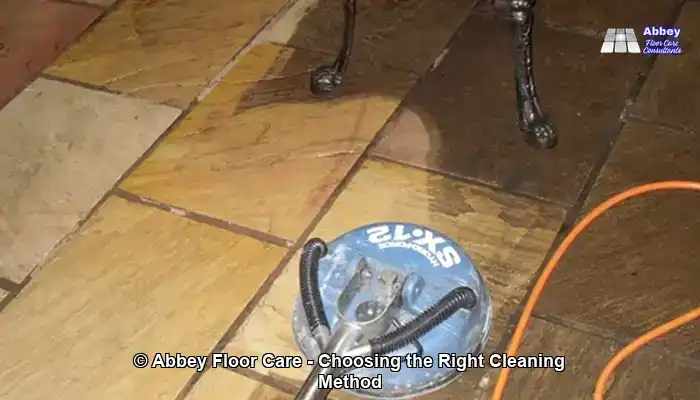
Last Updated on November 14, 2025 by David
Mastering the Art of Sandstone Floor Restoration in Highclere Homes
- Understand the Unique Porous Nature of Sandstone: Sandstone is a highly porous material, requiring careful and gentle cleaning methods to avoid damaging its surface through etching or erosion.
- Utilize pH-Neutral Cleaners for Routine Care: pH-neutral cleaners are ideal for everyday maintenance, while alkaline solutions can tackle more stubborn dirt—ensure thorough rinsing and resealing follows any deep cleaning.
- Maintain Topical Sealers for Optimal Protection: Proper care of topical sealers enhances the appearance of your floors, offering protection against wear and tear, particularly in high-traffic areas.
- Follow Correct Restoration Procedures: Effective restoration relies on thorough surface preparation, careful agitation, and complete rinsing followed by sealing to prevent future stains.
- Implement Ongoing Maintenance Routines: Regular upkeep with soft cleaning tools and quick responses to spills helps maintain the finish and reduces the necessity for deep cleaning.
Key Differences Between Sandstone and Other Stone Types

Examining Sandstone's Composition and Porosity
Sandstone is classified as a sedimentary stone composed of compressed sand and various mineral particles. Its natural porosity allows for the absorption of moisture and stains if not sealed correctly. Depending on the cutting and finishing techniques used, the surface can have a smooth or textured appearance. Regardless of the type, all sandstone floors require gentle, stone-safe care to preserve both their structural integrity and aesthetic appeal over time.
Identifying Common Problems with Sandstone Floors in Highclere Homes
In Highclere and nearby areas, sandstone floors are commonly found in older homes and period properties. Over time, factors such as foot traffic, various cleaning agents, and seasonal moisture can lead to surface wear, discoloration, and diminished sealant effectiveness. Since sandstone is softer than granite or slate, it is more prone to erosion, making consistent maintenance crucial to preserving both its appearance and functionality.
Expert Advice: Recommended Products for Daily Sandstone Maintenance

Fila Pro Floor Cleaner
|

FILA PS87 PRO
|

Vileda H2PrO Spin Mop System
|
Recognizing Signs Indicating Your Sandstone Floor Requires Restoration

Detecting Surface Wear and Discoloration on Sandstone Floors
As time progresses, sandstone floors may gradually lose their original color and texture due to factors such as foot traffic, cleaning residues, and moisture exposure. If the surface appears patchy, dull, or uneven, it indicates that the protective layer has weakened, allowing dirt and liquids to penetrate more easily. This deterioration significantly impacts both the overall aesthetic and structural integrity of the flooring, making timely restoration essential to maintaining its charm and durability.
Identifying Signs of Sealant Loss on Sandstone Floors
When the sealant begins to degrade, sandstone becomes more porous and vulnerable to stains. You may notice that water no longer beads on the surface but instead soaks into the stone. This indicates a crucial loss of protective qualities, requiring resealing as part of the restoration process to protect against further damage and staining, ultimately ensuring the longevity of your beautiful flooring.
Recognizing Uneven or Slippery Textures on Sandstone Floors
Sandstone should feel stable and secure underfoot, displaying a consistent texture. If certain areas turn slippery, powdery, or rough, this could be a result of surface erosion or accumulation of residues. These changes signal that the floor requires deep cleaning and resealing to restore both its safety and aesthetic appeal, providing a pleasant and secure walking experience for everyone who enters.
Choosing the Best Cleaning Method for Your Sandstone Floors

When to Use pH-Neutral Cleaners for Sandstone Maintenance
For lightly soiled sandstone floors, a pH-neutral cleaner is typically adequate. These products effectively lift surface grime without compromising the stone’s mineral structure or existing sealant. They are suitable for routine maintenance and can be safely used on both sealed and unsealed sandstone, as long as the soil load is minimal. Regular use of these cleaners plays a vital role in preserving the stone’s natural beauty and ensuring its longevity, making them an essential part of your cleaning routine.
When to Switch to Alkaline Cleaners for Severe Cleaning Needs
When sandstone absorbs oils, grime, or organic residues—especially in high-traffic areas like kitchens or entryways—an alkaline cleaner may be necessary. These solutions emulsify deeply embedded soils, aiding in their removal from the porous surface. However, it is crucial to rinse thoroughly afterward to prevent any residue buildup. If the cleaner necessitates prolonged dwell time, resealing the floor afterward is advisable to restore protection and prevent future staining issues.
The Importance of Avoiding Acidic or Abrasive Cleaning Agents
Acidic cleaners, such as vinegar or limescale removers, can etch sandstone and cause irreversible damage. Additionally, abrasive powders and stiff brushes can scratch the surface or erode softer areas, leading to further deterioration. Always opt for stone-safe products and cleaning tools that effectively cleanse without compromising the floor’s integrity and appearance, preserving its beauty for years to come.
Your Comprehensive Guide to Sandstone Floor Restoration Techniques
Preparing the Surface and Removing Dust Effectively
Begin by clearing the area and removing any loose debris using a soft-bristle broom or a vacuum set to hard-floor mode. Be mindful not to drag furniture or utilize metal-edged tools, as these can scratch or chip the stone. If the floor has old polish or residues, consider using a stone-safe stripper before starting the cleaning process to ensure optimal results and a fresh beginning.
Applying Cleaner and Gentle Agitation Methods
Choose an appropriate cleaner based on the degree of soil present. For general grime, a pH-neutral solution is ideal. For heavy contamination, dilute an alkaline cleaner according to the instructions on the label. Apply the solution evenly, allowing it to dwell for 5 to 15 minutes. Gently agitate with a white pad or a soft brush to lift embedded dirt without damaging the stone’s surface.
Rinsing and Drying the Floor to Prevent Residue
Thoroughly rinse with clean water, utilizing a wet vacuum or multiple mop passes to eliminate all residues. Any leftover cleaner can leave streaks or dull the finish, undermining your restoration efforts. After rinsing, allow the floor to dry completely before assessing if sealing or polishing is necessary. A dry microfiber mop can hasten the drying process and avert water spots that could mar the surface.
Strategies for Sealing Sandstone for Long-Lasting Protection
Distinguishing Between Impregnating and Topical Sealers
Impregnating sealers penetrate the sandstone’s surface, providing invisible protection against moisture and stains from within. These sealers are perfect for homeowners desiring a natural matte finish for their floors. Conversely, topical sealers create a protective layer on the surface, which can enhance color or provide a satin or glossy finish. When maintained correctly, topical sealers are excellent for high-traffic areas or decorative finishes.
Properly Applying Sealer for Best Results
Before sealing, ensure the floor is completely clean and dry. Apply the sealer evenly using a lint-free cloth, sponge, or applicator pad, working in small sections to guarantee thorough coverage. Allow the product to absorb for the recommended time and wipe away any excess to avoid streaks or residue. Some sealers may require an additional coat, particularly on more porous or weathered stone, to ensure comprehensive protection.
When to Reseal Your Sandstone Floor and Frequency Guidelines
Most sandstone floors benefit from resealing every 2 to 4 years, depending on foot traffic and moisture exposure. In kitchens, hallways, or entrances, resealing may be necessary more frequently. A simple water-drop test can determine this: if water soaks in rather than beads up, it is time to reseal. Regular inspections ensure the floor remains protected, facilitating easier cleaning and preserving its beauty over time.
Enhancing the Aesthetics and Safety of Sandstone Floors
Using Colour-Enhancing Sealers to Revitalize Sandstone
If your sandstone floor looks faded or washed out, a colour-enhancing sealer can deepen its natural tones and showcase the stone’s unique character. These sealers slightly darken the surface while accentuating the variation in grain and mineral content. They work particularly well on weathered or pale sandstone but should only be applied after thorough cleaning and adequate drying to ensure optimal adhesion and results.
Improving Slip Resistance on Sandstone Floors
In moisture-prone areas such as kitchens, bathrooms, or entryways, enhancing slip resistance is crucial for safety. Some sealers contain anti-slip additives, or you can apply a separate non-slip treatment over the sealed surface. Always conduct a test in a small area first to confirm that the finish remains visually appealing and easy to maintain while providing necessary traction for safety.
Exploring Buffing and Polishing Solutions for Sandstone Floors
While sandstone is not generally polished to a high gloss like marble, light buffing with a soft pad can enhance its overall appearance and feel underfoot. For a subtle sheen, consider using a stone-safe polishing compound designed for honed finishes. Avoid wax-based products, as they can trap dirt and create uneven shine over time, leading to a dull appearance.
Essential Maintenance Strategies for Sandstone Floors in Highclere Homes
Creating Effective Weekly and Monthly Cleaning Routines
To keep sandstone floors in excellent condition, dry mop regularly with a microfiber pad to remove dust and grit. For weekly cleaning, use a diluted pH-neutral cleaner, ensuring not to saturate the floor. Additionally, perform monthly inspections of high-traffic areas for wear and promptly reapply cleaner as needed to maintain the stone’s condition. Avoid excessive moisture, as it can weaken sealants over time, leading to more significant maintenance issues.
Selecting the Best Tools for Ongoing Sandstone Care
Flat microfiber mops are ideal for cleaning sandstone since they capture fine particles without scratching the surface. It’s best to avoid sponge mops, as they may push dirt deeper into the stone’s pores. For larger areas, consider using a spray mop with refillable cartridges for controlled application of stone-safe solutions. Always rinse mop heads thoroughly after use to prevent residue buildup, ensuring effective cleaning during each session.
Responding Quickly to Spills and Stains on Sandstone Floors
Blot up spills immediately with a soft cloth or paper towel. Avoid rubbing, as this can spread the stain further. For oily or colored spills, apply a small amount of stone-safe cleaner and rinse thoroughly with clean water. If a stain remains, use a baking soda and water poultice, ensuring a test is done first to confirm it won’t affect the finish. Timely action is essential to prevent permanent marks and maintain the floor's fresh appearance.
Frequently Asked Questions About Sandstone Floor Restoration
Can Steam Cleaners Be Used on Sandstone Floors?
It is recommended to avoid steam cleaners on sandstone. The high heat and moisture can damage sealants and drive water deep into the stone’s pores, potentially causing long-term issues. Instead, rely on stone-safe liquid cleaners and gentle agitation techniques for effective deep cleaning without risking the integrity of the surface.
What Should I Do If My Floor Is Already Damaged?
If your sandstone floor has deep stains, scratches, or surface erosion, simple cleaning may not be enough. In such cases, professional honing or resurfacing may be required to restore the stone’s appearance. Once the necessary repairs are completed, sealing the floor will help prevent future damage and simplify ongoing maintenance, ensuring its longevity.
How Long Can I Expect the Restoration to Last?
With proper sealing and maintenance, a restored sandstone floor can stay in excellent condition for several years. High-traffic areas might need touch-ups or resealing every 2 to 3 years, while less-trafficked zones can often last longer without significant intervention. Regular care is vital for extending the time between major restorations and ensuring the longevity of your flooring investment.
The Article How to Restore Sandstone Floors in Highclere Homes first found on https://www.abbeyfloorcare.co.uk
The Article Restore Sandstone Floors in Highclere Homes Effectively appeared first on https://fabritec.org
The Article Effective Restoration of Sandstone Floors in Highclere Homes Was Found On https://limitsofstrategy.com
The Article Restoration of Sandstone Floors in Highclere Homes Made Effective First Appeared ON
: https://ad4sc.com





No responses yet